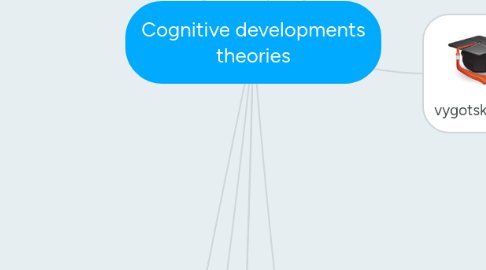
1. 21st century learning/applying theories
1.1. According to the Vygotsky's theory, the children can learn and overcome failures with the adults help. In their development, their own effort is not the only thing helps them grow. The adults' guidance and assistance are needed to them. The social interaction is essential to them because they can learn by others quickly rather than learn by their own self. I tried many different ways to help children learn in my class room, and the most efficient way to help they think and progress is to separate them to several teams for a task. I modeled how to accomplish the task one time to them. The children in each team should figure out the task together and help each other. After they finish the work, I would help them at the most difficult part. It helped me train their abilities to overcome the new things and also gave them strong memories about what they had made.
2. Environment/ influence of culture
2.1. piaget: the cultural differences might have an impact, but he didn’t systematically explore them in children’s thinking processes.
2.2. Vygotsky: Children’s cultural environments can have a huge influence on what children learn and how they develop.
3. Common factors of these two theories
3.1. Both suggested that children acquire increasingly complex thinking processes with age and experience
3.2. Challenge can improve development
4. Different factors of these two theories
4.1. Piaget: a child can accommodate to new objects and events only when the child can(the age matters), to some degree, also assimilate them into existing schemes.
4.2. Children's development
4.3. Vygotsky: Some challenging tasks may need adults' assistance and guide to accomplish, and it could be completed.
4.4. Piaget:children’s cognitive development is largely the result of their own efforts
4.5. Guidance VS mature naturally
4.6. Vygotsky: the role of adults and other more advanced individuals can mediate new experiences and provide needed support during challenging activities.
4.7. Piaget: language certainly enhances cognitive development: It provides many labels (symbols) that help children mentally represent their world, and it’s the primary means through which children gain knowledge of other people’s diverse perspectives on various situations and topic
4.8. Language development
4.9. vygotsky: in their conversations with adults, children learn the meanings their culture ascribes to particular events and gradually begin to interpret the world in culture‐specifi ways
4.9.1. Self talk and inner speech, Social interaction helps children develop their language and have their own words.
5. Target group: 7th grade children at the industrial technology class
5.1. I am an industrial technology teacher in Taiwan, I teach them to know technology and apply the skills at creating cars, making table, etc. The children will meet many issues and have to deal with the problem while they create these things by their selves.
6. Personal perspective: As an industrial technology teacher, many tasks in the class need group works, body works. In other words, the children must use their hands to create the thing and accomplish the task. I think it is the most difficult class because we not only need to hear what the teacher says, we also need to apply what we learn on the skill we are going to use. Hence, the teacher in this class would be very important as the model to the children. We must know which method would be appropriate for them to learn effectively.
7. vygotsky
7.1. sociocultural theory
7.1.1. Though both informal conversations and formal schooling, adults convey to children the ways in which their culture interprets and responds to the world.
7.1.2. Every culture passes along physical and cognitive tools that make daily living more productive and effient.
7.1.3. Complex mental processes begin as social activities and gradually evolve into internal mental activities that children can use independently.
7.1.4. Children appropriate their culture’s tools in their own idiosyncratic manner.
7.1.5. Children can accomplish more diffilt tasks when assisted by more advanced and competent individuals.
7.1.6. Challenge improves growth
7.1.7. play allows children to learn effectively.
7.1.8. mediated learning experience, encourages the child to think about the phenomenon or event in particular ways
8. Piaget
8.1. constructivist theory
8.1.1. Th process of equilibration promotes progression toward increasingly complex thought
8.1.2. Children construct rather than absorb knowledge.
8.1.3. Children are active and motivated learners
8.1.4. In part as a result of maturational changes in the brain, children think in qualitatively different ways at diffrent ages.
8.1.5. four stage theory Emphasize that different ages has different mature
8.1.6. Children continually learn new things through two complementary processes: assimilation and accommodation.
8.1.6.1. But sometimes children can’t easily interpret and respond to a new object or event using existing schemes.
8.1.7. Interactions with one’s physical and social environments are essential for cognitive development
